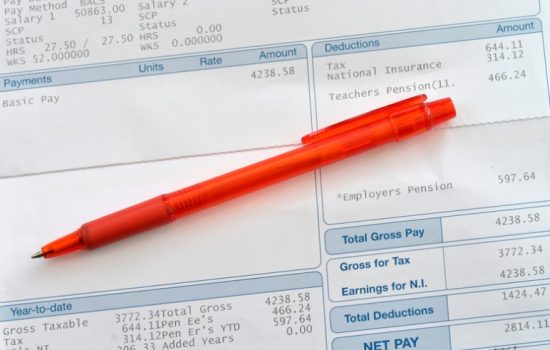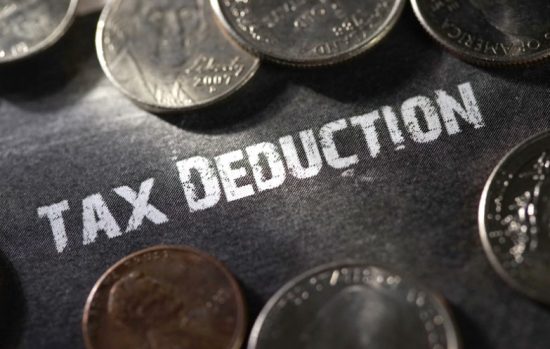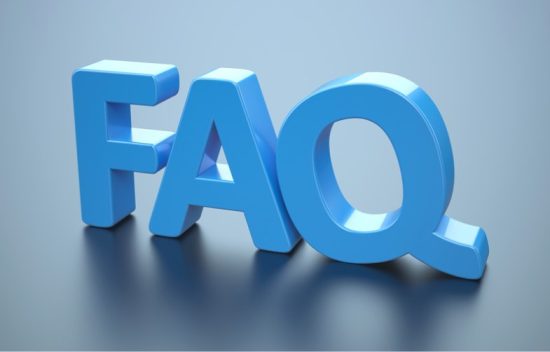Are you a resident of Canada who has received a T4A form and wondering what it means? Well, you’re not alone! Understanding the complexities of tax forms can be daunting, especially when it comes to deciphering the difference between various types. Fortunately, we are here to demystify everything about T4As in Canada. In this blog post, we will explore what exactly is a T4A form, its income types and tax implications, why you would receive one, and much more! So let’s dive right into it and make sense of all things related to T4As.
What is a T4A in Canada?

A T4A is a tax slip used in Canada to report self-employed income, pensions, and other types of income that are not included on a T4 slip. It’s important to note that the information provided on a T4A form helps determine your eligibility for certain government programs such as Employment Insurance (EI) and Old Age Security (OAS).
T4As can come in different forms depending on the reported income type. For example, if you receive pension income, you will be issued a T4A(P), but if you receive scholarship or bursary payments, then you will receive a T4A(OAS).
Suppose you’re an employer who has paid out any of these incomes listed above during the year to contractors or employees who were not subject to source deductions like CPP/QPP contributions or EI premiums. In that case, you must issue them with their respective T4A slips before February 28th.
In short, understanding what a T4A form stands for will help ensure that employers and employees accurately report all sources of taxable income. So whether you are receiving one or issuing one this year, make sure everything is done right!
T4A Income Types
T4A is an important tax slip for Canadians who receive various types of income other than employment income. The T4A form includes different income types, which are categorized based on the nature of the payment received. One type of income listed in the T4A form is pensions and superannuation payments. This includes payments from registered pension plans, annuity contracts, and similar sources.
Another type of income included in T4A is self-employment commissions or fees paid to professionals such as doctors, lawyers or accountants. These individuals usually provide services as independent contractors rather than employees. The third category that appears in a T4A statement is other amounts paid, including research grants, bursaries awarded to students and certain scholarships.
In addition to these categories, other specific types of income may be reported on a T4A, depending on each individual’s situation. It’s important to review your T4A carefully since some forms report taxable benefits that must be included when calculating your total annual tax liability.
Issuing and Receiving T4A Forms
Issuing and receiving T4A forms is essential for individuals who receive certain types of income in Canada. The payer, such as a business or government agency, issues the T4A form to the recipient and sends a copy to the Canada Revenue Agency (CRA).
If you have received a T4A form, it reviewing it carefully to ensure its accuracy is important. Make sure your name and social insurance number are correct and that all income amounts are accurately reported.
It’s also crucial to keep your T4A forms organized and safe. You may need them when filing your taxes or applying for government benefits like Employment Insurance (EI).
For businesses issuing T4A forms, it’s vital to ensure that all necessary information is included on each form. Failure to provide accurate information could result in penalties from the CRA.
Issuing and receiving T4A forms plays a significant role in maintaining accurate records of income earned throughout the year. By staying organized and ensuring accuracy, both payers and recipients can avoid potential issues with their taxes or government benefits.
T4A Reporting and Tax Implications

When it comes to T4A reporting, the process is quite straightforward. If you receive a T4A slip, you must report the income stated on it on your tax return for that year. The total amount of all your T4A slips goes onto Line 13000 of your tax return.
It’s important to note that different types of income are reported on a T4A slip, such as pension or self-employment income. Each type has its designated box number on the slip, corresponding with a specific line number on your tax return.
If you’re unsure how to report T4A income or have any questions about your taxes, it’s always best to consult with a professional accountant or tax preparer.
If you fail to report any taxable income from a T4A slip, you could face penalties and interest charges from the Canada Revenue Agency (CRA). It’s crucial to ensure all sources of income are accurately reported to avoid any potential legal issues down the road.
Understanding the reporting requirements and tax implications associated with receiving a T4A slip can save you time and money in the long run. Always make sure to accurately report all taxable income received throughout the year when filing taxes.
T4A and Employment Insurance (EI)
When it comes to Employment Insurance (EI), the T4A form is essential. This form reports any EI benefits paid out to an individual during the year and must be issued by Service Canada.
If you have received EI benefits in the past year, you will receive a T4E slip from Service Canada outlining how much was paid to you. This information must be reported on your income tax return using a T4A slip.
It’s important to note that while EI benefits are taxable, they are not subject to Canada Pension Plan (CPP) contributions or Employment Insurance premiums.
In addition, if you repaid any EI benefits received in the prior year, this amount can also be deducted from your income tax return. You will need to report both the original amount of benefit received and the repayment amount on your tax return using separate lines on your T4A slip.
Understanding how a T4A relates to Employment Insurance benefits is important to managing one’s finances and staying compliant with Canadian tax laws.
T4A and Registered Retirement Savings Plans

Canadians use a Registered Retirement Savings Plan (RRSP) as a retirement savings account. Contributions made into an RRSP are tax-deductible, meaning they reduce taxable income. When funds are withdrawn from the plan in retirement, they’re subject to taxation as regular income.
If you receive a T4A slip with amounts reported in box 20 – self-employed commissions – or box 48 – fees for services, it means you earned income from self-employment activities and didn’t have taxes withheld at source by your clients. This includes any money received via contract work or freelance jobs where no payroll deductions were taken off.
When this happens, it’s important to ensure that you report these earnings on your annual tax return and pay any necessary taxes owed. You may also be able to deduct certain expenses related to earning this income when filing your taxes.
It’s crucial to note that if self-employment earnings exceed $3,500 per year, Canada Revenue Agency regulations require individuals to contribute towards Employment Insurance (EI).
Why Would I Receive a T4A?
There are several reasons why you may receive a T4A form in Canada. One of the most common is if you received income from a pension, retirement plan or annuity. These types of income are considered taxable and must be reported on your tax return.
Another reason for receiving a T4A is if you received self-employment income, such as fees for services rendered or commissions earned. This type of income is also taxable and must be reported on your tax return.
If you received other types of income that are not employment-related but still need to be reported, such as scholarships or bursaries, then you may also receive a T4A form.
Furthermore, suppose you withdrew funds from an RESP account (Registered Education Savings Plan) for educational purposes or transferred funds from an RRSP account (Registered Retirement Savings Plan) to an RRIF account (Registered Retirement Income Fund). In that case, those transactions will likely trigger the issuance of a T4A slip.
Is T4A Tax Deductible?

One common question when it comes to T4A forms is whether they are tax-deductible or not. The answer depends on the income type reported on the form.
For instance, if you received a T4A for fees related to services you provided as an independent contractor or self-employed individual, then those fees are considered business income and can be deducted against any expenses incurred while earning that income.
On the other hand, if you received a T4A for pension plan benefits, those payments are generally not deductible since they represent retirement savings previously taxed at a lower rate.
It’s also worth noting that some types of income reported on T4As may be subject to withholding taxes, which means they have already been partially paid by your employer upfront. In these cases, only the remaining balance would be eligible for deduction.
Whether or not your T4A is tax-deductible will depend on what type of income it represents and whether any taxes have already been withheld. It’s always best to consult with a professional accountant or tax expert for specific guidance.
Conclusion
As we come to the end of this article, it’s important to understand that a T4A is an essential document for anyone who receives certain types of income in Canada. It serves as proof of income received and helps ensure accurate tax reporting. It’s crucial to note that the information provided on the T4A form must be reported correctly when filing taxes. Failure to do so can result in penalties or fines from the Canada Revenue Agency (CRA).
FAQ – What is a T4A in Canada?
1. What is the difference between a T4 and a T4A?
If you’re new to the Canadian tax system, it’s easy to get confused between T4s and T4As. While they may look similar, these forms serve very different purposes.
A T4 is used by employers to report employment income and deductions for their employees. This form provides a summary of your annual earnings and any taxes that were withheld from your paycheck throughout the year.
On the other hand, a T4A is used to report income that isn’t related to employment. This includes things like self-employment income or pension payments.
While both forms are important for accurately reporting your income, it’s essential to understand which applies in each situation. If you’re unsure which form you need or have questions about how to fill them out correctly, don’t hesitate to seek professional advice from an accountant or tax expert.
2. Does a T4A count as income?
A T4A form reports income to the federal government that may need to be reported on your tax return. The type of income reported on a T4A can vary, but generally, it represents any money you have received during the year that isn’t from an employer.
The amount of money reported on a T4A can impact your taxes in different ways, depending on the source of the income. For example, suppose you receive pension or annuity payments through a registered retirement savings plan (RRSP). In that case, those amounts are taxable and must be included as part of your total income for tax purposes.
Similarly, suppose you receive self-employment income or freelance earnings from contract work outside of regular employment. In that case, these amounts will also need to be accounted for when calculating your overall taxable income.
It’s important to note that unlike a T4 slip issued by an employer, which includes only employment-related earnings and withholdings, a T4A can represent various types of non-employment-related earnings, such as scholarships or bursaries.
3. What happens if you don’t report T4A?
Failing to report T4A income can lead to serious consequences. If the Canada Revenue Agency (CRA) discovers that you failed to report your T4A income, they can penalize you with interest and fees on the amount owed. The longer it takes for you to pay this amount, the more money you will owe.
Additionally, if the CRA finds out that you have not been reporting your T4A income for several years in a row, they could initiate an audit of all your past tax returns. This could be a time-consuming and costly process that may result in further penalties or even criminal charges.
Ensuring that any T4A forms received are accurately reported on your tax return each year is crucial. Failure to report it can have significant financial repercussions even if the amount is small or insignificant.
To avoid these potential issues, make sure to keep accurate records of all your income throughout the year and consult with a tax professional if needed.
4. Who sends out T4A?
A T4A is an important tax document in Canada that reports various types of income received by individuals. It is essential to understand the different income types and reporting requirements associated with it to avoid any penalties from the Canada Revenue Agency.
Receiving a T4A can be due to various reasons, such as contract work or receiving certain benefits. The good news is that it may not always be taxable, depending on the type of income reported.
5. How do I report T4A income?
A T4A is an important tax form in Canada that reports various types of income received. Understanding the different income types reported on a T4A and how they affect your taxes is important. If you receive a T4A, be sure to report it accurately when filing your taxes to avoid penalties or interest charges.
To report T4A income, use the information provided on the form and enter it into the appropriate section of your tax return. Make sure all amounts are accurate and up-to-date before submitting your return.
If you’re unsure about any aspect of reporting T4A income or need help understanding what’s required, consult with a qualified accountant or tax professional who can guide you through the process.
Remember, being proactive when dealing with taxes can save you time and money in the long run. So don’t wait until tax season arrives – start preparing now!











